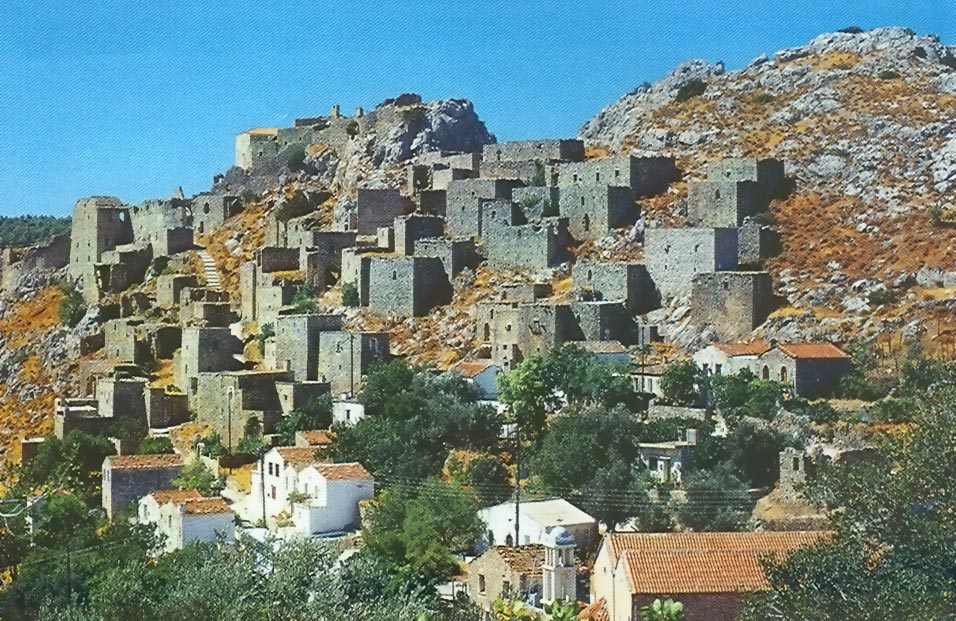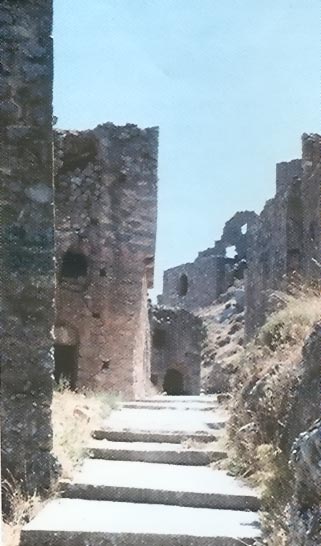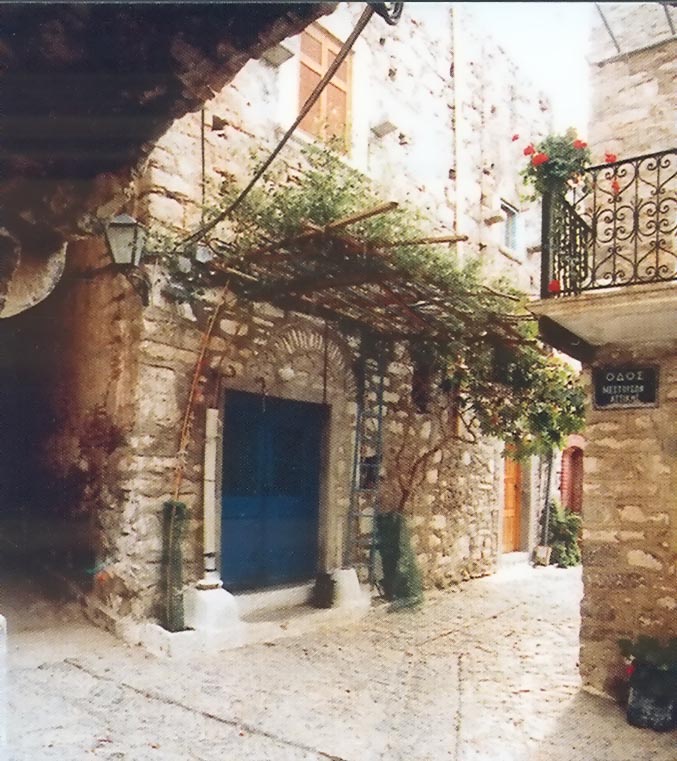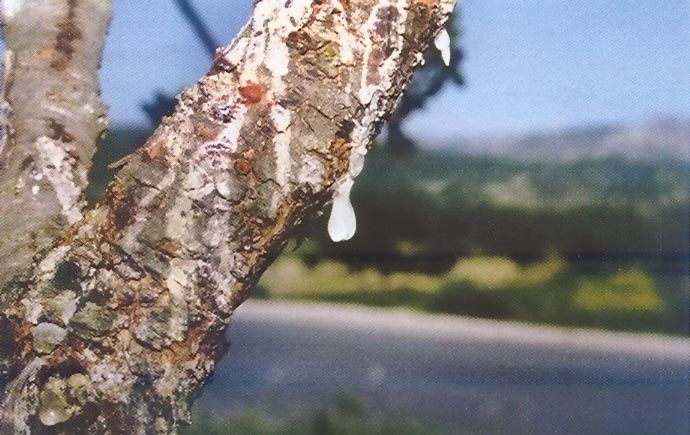 |
||
|
Chios The island of mastic never sleeps. Its rich history , in combination with the intense |
||
|
THE CITY THE CHORA OF CHIOS was built at the east and central side of the island across the peninsula of Erythrea, from which just a narrow channel separates it, which shows the close connection it used to have with Ionia. The history of Chios goes back over 3000 years while today with over 30,000 inhabitants, it is considered to be and important educational and cultural center. In Chios, there is the Library of Adamandios Korais, and also the Homerian Cultural Center, where congresses and councils on all subjects are held, and also cultural events, theatrical performances and different artistic activities, in general.Most trading transactions of the island take place in Chora due to its coastal connection with Oenouses and Psara, the big ports of the Aegean and Greece and those of Turkey. In the city, apart from the port, the castle stands out and its neighborhoods that partly remain despite the 19th century disaster and earthquakes. One of the characteristics of the city is that one can walk along |
 |
|
|
the small streets of the neighborhoods but also along the main streets. In the center, there is the square of Vounakios, the greater part of which is taken by the County Gardens. |
||
ON APLOTARIA, the city's main stree, most of the buildings there are of the 19th and the beginning of the 20th century, that used to be old mansions. On its southern part, one can visit the Archeological Museum, the Aegean University, the city's foot-ball grounds, and also the Nautical Museum. Finally, at the perimeter of the city there is the Kammenos (Burnt) tower and the Gothic Tower, both buildings of the genoan period. STORIES AND SIGHTS are also concealed by the villages of Chios, many of which are known as Mastichochoria (Mastic villages). Nenita, a large settlement, lying on the flat crown of a wide range, from where it oversees the olive groves and the shore, is about 18 kilometers from the city of Chios. During the medieval years, Nenita was the largest of all the Mastic villages, with 2500 inhabitants, while today it numbers about 1000 people. Nenita are considered to be the cultural center of the Mastic Villages. The main occupation of the villagers is agriculture, and especially the mastic trees. |
 |
|
MESTA, one of the most beautiful villages, is 35 kilometers southwest of the city of Chios. It is a medieval village characterized as a National Trust monument. Its elaborate architecture originates from the Byzantine period and the village itself is built like a castle. The houses are small and made of stone, one next to the other form a strong protective wall in the outer perimeter of the settlement. The woodcarved icon-screen of the Small Taxiarchi, it is considered to be an elaborate specimen of Chian wood-carving. Besides,during the Carnival period, which is soon coming, there is the custom known to all Chians, of re-enacting the court of justice held by the Agha in these villages during the Turkish domination. |
||
|
THIRTY-ONE KILOMETERS from the city of Chios and 6 kilometers past Pyrgi, one meets one more medieval village, Olymbi. It is worth seeing the Bank of Olymbi, a two-storey building with long and narrow halls which remains in very good condition from the old medieval period. The Byzantine-medieval village of Anavatos, in the center of the island, is also well known: the "Mistras" of the Aegean. During the revolution of 1821 and the massacre of 1822 it was a place of martyrdom, the last rampart of freedom, and the "Zallongos" of Chios which fell into the hand of the conqueror by treason. Until today, the Big Taxiarchis remains alive, the only building seen from afar in this mysterious dead city, The crowded Vrondados, with about 5000 people, together with Kardamyla and Oenouses, is famous as the place of origin of many ship-owners, who dominate the field of shipping and commerce. In the area of Vrondados, there is also the monastery of Panagia Myrsiniotissa, as well as the church of Agios Stephanos, on a green hill. Between the church of Panagia Moutsena (St. Mary the Virgin of the ship boys) and the church of St. Nicholas (patron saint of sea-men) there is an impressive statue to the "Unknown Sailor", in honor of all sea-men lost at sea. A little further out from |
 |
|
|
Vrondado, on the hill side looking towards the sea, once covered with rosemary and cypress-trees, there is the memorial structure of Giannis Psycharis. On his white grave, there are engraved the words he himself composed. It is worth visiting "Daskalopetra", the area where there is Homer's Stone. According to the legend, it is the place where the famous poet Homer taught his immortal epics. Finally, the area of Kourouni and its mountain-sides that surround it, are famous for producing the local "kourounian wine", which draws its origin from the famous "Ariousian Wine" of ancient times. |
||
From the center of the square, Kennedy Str. leads to the formal gate of the medieval castle of Chios, with the narrow streets, many remains and buildings of various periods. Close to the square, there some worth noticing buildings that have remained from the time of the Turkish domination of the island, the Bairacli Mosque, Osmanie Mosque and Metzitie Mosque, which houses the Byzantine Museum of Chios. In about the same area, there is the church of Agios Vasilios of Petrokokkinon, the cathedral of Chios, since the 16th century, and the church of St. George. |
 |
|
|
|
||
(Posting Date 28 August 2006) HCS readers can view other excellent articles by this writer in the News & Issues and other sections of our extensive, permanent archives at the URL http://www.helleniccomserve.com./contents.html
All articles of Athens News appearing on HCS have been reprinted with permission. |
||
|
||
|
2000 © Hellenic Communication Service, L.L.C. All Rights Reserved. http://www.HellenicComServe.com |
||

